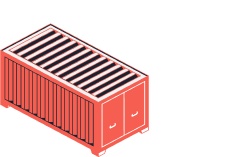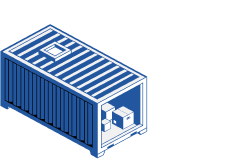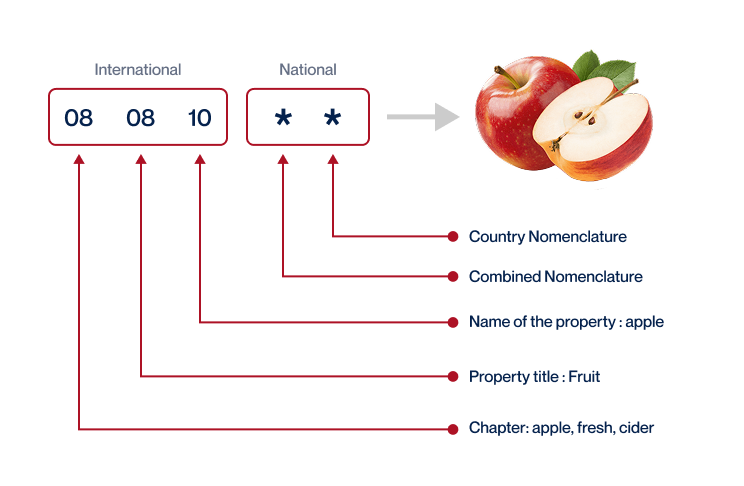Freight Shipping between Thailand and Canada | Rates, duties & more
Shipping goods from Thailand to Canada might sound as baffling as a moose mastering Muay Thai, but we assure you it's achievable! To master the maze of rates, transit times, and strict customs regulations, read on. This guide serves to simplify the intricate world of international logistics. With rich, comprehensive information on various types of freight options - air, sea, road, and rail, alongside a step-by-step overview of customs clearance procedures, prevailing duties, and taxes, it is a one-stop resource for businesses. If the process still feels overwhelming, let SIAM Shipping handle it for you!
Which are the different modes of transportation between Thailand and Canada?
Selecting the ideal transport mode for shipping goods from Thailand to Canada demands strategic thought given the long distance and crossing several international borders. While air freight offers quick delivery, ocean freight becomes appealing for bulky, non-urgent shipments due to cost-effectiveness. Imagine air freight as a speedy but pricier rocket, while sea freight is like a spacious, affordable, but slower ship. Reflect on what's more crucial for your business - speed or cost-saving? Making the right choice can turn these geographical hurdles into winning strides in your international shipping journey.
Need help with your shipment?
Need assistance with your shipment? Dont hesitate to contact us even for a simple question. Choose the option that suits you
Live chat with an expert Chat on WhatsApp Free Quote 24hHow can Siam Shipping help you

Sea freight between Thailand and Canada
Ocean freight is a crucial bridge linking the bustling economies of Thailand and Canada. Strategic location of ports like Laem Chabang in Thailand and Vancouver in Canada makes them lifelines for bustling industrial sectors, connecting manufacturers and consumers across thousands of miles. Primarily, ocean shipping is the lifeblood of this trade relationship, offering a cost-effective conduit for moving high-volume goods despite its unhurried pace. However, the path isn’t always smooth sailing.
Indeed, shippers often trip over intricate procedures and underappreciated nuances of maritime logistics while navigating this international route. Mistakes are common, leading to unnecessary delays and cost overruns. Missteps can come from anywhere – improper customs paperwork, lack of understanding about cargo loading, or misconceptions about container types. But don’t despair! With well-devised best practices and in-depth knowledge, much of the turbulence can be smoothened. Stick around as we take you through effective strategies and those life-saving tips to master the art of ocean shipping between Thailand and Canada.
Main shipping ports in Thailand
Laem Chabang Port: Located at the Gulf of Thailand, this port is the country’s busiest and most strategic due to its maritime connectivity, with a shipping volume exceeding 8.6 million Twenty-Foot Equivalent Units (TEUs) annually. It is essential for Thailand’s automotive and electronics industry. Key Trading Partners and Strategic Importance: Major trading partners include China, the USA, Japan, and the ASEAN countries. Laem Chabang plays a significant role in the trade between these countries, often acting as the central trans-shipment point. Context for Businesses: If your business aims to have a substantial presence in Southeast Asia and wants reliable access to large markets, Laem Chabang Port could be a key component of your strategy, given its mitmaritime connectivity and location close to major consumer markets. Bangkok Port: Located by the Chao Phraya River, Bangkok Port is the second busiest nationwide handling over 0.9 million TEUs annually. It serves as a key gateway to the capital city of Bangkok, a vibrant economic hub. Key Trading Partners and Strategic Importance: Primary trading partners include China, other ASEAN countries, Japan, and South Korea. Bangkok Port is strategically relevant to businesses serving urban consumers and mixed-industry markets. Context for Businesses: If your goods cater to urban markets and are suitable for multimodal transport, Bangkok Port could fit well into your logistics. It’s intermodal facilities link seafreight, road, and rail efficiently. Map Ta Phut Port : Based within Rayong Province, Map Ta Phut is Thailand’s primary port for bulk and liquid cargo. Annually, the port handles around 207 million tonnes. Key Trading Partners and Strategic Importance: Map Ta Phut Port mostly caters to countries with significant petrochemical and energy industries such as South Korea, Japan, and Singapore. Context for Businesses: If your business handles bulk or liquid freight, especially in petrochemicals, Map Ta Phut Port could offer you substantial handling capacity, specialized infrastructure, and a strategic location close to Thailand’s energy sector.Main shipping ports in Thailand
Laem Chabang Port: Located at the Gulf of Thailand, this port is the country’s busiest and most strategic due to its maritime connectivity, with a shipping volume exceeding 8.6 million Twenty-Foot Equivalent Units (TEUs) annually. It is essential for Thailand’s automotive and electronics industry. Key Trading Partners and Strategic Importance: Major trading partners include China, the USA, Japan, and the ASEAN countries. Laem Chabang plays a significant role in the trade between these countries, often acting as the central trans-shipment point. Context for Businesses: If your business aims to have a substantial presence in Southeast Asia and wants reliable access to large markets, Laem Chabang Port could be a key component of your strategy, given its mitmaritime connectivity and location close to major consumer markets. Bangkok Port: Located by the Chao Phraya River, Bangkok Port is the second busiest nationwide handling over 0.9 million TEUs annually. It serves as a key gateway to the capital city of Bangkok, a vibrant economic hub. Key Trading Partners and Strategic Importance: Primary trading partners include China, other ASEAN countries, Japan, and South Korea. Bangkok Port is strategically relevant to businesses serving urban consumers and mixed-industry markets. Context for Businesses: If your goods cater to urban markets and are suitable for multimodal transport, Bangkok Port could fit well into your logistics. It’s intermodal facilities link seafreight, road, and rail efficiently. Map Ta Phut Port: Based within Rayong Province, Map Ta Phut is Thailand’s primary port for bulk and liquid cargo. Annually, the port handles around 207 million tonnes. Key Trading Partners and Strategic Importance: Map Ta Phut Port mostly caters to countries with significant petrochemical and energy industries such as South Korea, Japan, and Singapore. Context for Businesses: If your business handles bulk or liquid freight, especially in petrochemicals, Map Ta Phut Port could offer you substantial handling capacity, specialized infrastructure, and a strategic location close to Thailand’s energy sector.Main shipping ports in Canada
Port of Vancouver: Location and Volume: Located in British Columbia on the west coast, the Port of Vancouver is a gateway to the Pacific, with a shipping volume of 186 million tonnes. Key Trading Partners and Strategic Importance: The port has expansive trading connections across 170 economies globally. It’s immensely important for Canadian trade, handling approximately $240 billion in cargo every year. Context for Businesses: If your business objective involves enhancing your reach to the Asia-Pacific market, the Port of Vancouver’s strategic location and extensive connections can be a significant advantage to your shipping strategy. Port of Montreal: Location and Volume: Positioned on the Saint Lawrence River, the Port of Montreal is a vital hub for transatlantic trade with a shipping volume of 40 million tonnes. Key Trading Partners and Strategic Importance: Main trading partners include Europe and the Mediterranean region. It is the largest container transshipment centre in the Great Lakes system, strategically placed to serve the industrial and agricultural heartland of North America. Context for Businesses: If you’re looking to ship goods to and from Europe, the Port of Montreal could be a central element of your strategy due to its strong links to European trading partners. Port of Prince Rupert: Location and Volume: Situated in British Columbia, the Port of Prince Rupert is a growing gateway to Asia, boasting a shipping volume of 39 million tonnes. Key Trading Partners and Strategic Importance: It’s best known for its fast and reliable trade routes to key Asian markets. It offers an efficient connection to North American rail networks. Context for Businesses: If you’re considering fast transpacific shipping with reliable rail connections across North America, the Port of Prince Rupert would likely be a critical part of your strategy. Port of Halifax: Location and Volume: Found on the east coast in Nova Scotia, the Port of Halifax is crucial for transatlantic trade, with a shipping volume of approximately 8 million tonnes. Key Trading Partners and Strategic Importance: Its key trading partners include Europe, the Mediterranean, the Middle East, and India. It is Eastern Canada’s ultra Atlantic gateway, catering to large, post-panamax vessels. Context for Businesses: If your operations involve shipping heavy goods transatlantically, the Port of Halifax’s position and capability to handle large vessels can be a vital asset to your logistical process. Port of Saint John: Location and Volume: Located in New Brunswick, the Port of Saint John is a critical intermodal gateway, with a shipping volume of 36.4 million metric tonnes. Key Trading Partners and Strategic Importance: It’s essential for trade with Europe, Latin America, and the Caribbean, besides domestic partners in Canada. It can competently handle all forms of cargo—container, bulk, and breakbulk. Context for Businesses: If you’re planning diversified operations handling multiple types of cargo, the Port of Saint John’s versatility and extensive connections can benefit your shipping strategy. Port of Quebec: Location and Volume: Positioned on the Saint Lawrence River, the Port of Quebec is the farthest inland deep-water port in North America, having a shipping volume of around 37 million tonnes. Key Trading Partners and Strategic Importance: Its primary trading partners include Western Europe and the United States. It has one of the largest bulk handling capacities in Canada. Context for Businesses: If you’re eyeing a deeper reach into the North American market with bulk cargo, the strategic inland position of the Port of Quebec can amplify your logistics.Should I choose FCL or LCL when shipping between Thailand and Canada?
Embarking on a shipping journey between Thailand and Canada? You have crucial decisions to make. One is choosing between Full Container Load (FCL) and Less than Container Load (LCL), also known as consolidation. Don’t let shipping jargon intimidate you! These terms simply refer to your sea freight options, with each having its unique impact on cost, delivery time, and the overall success of your shipping operations. Dive into this guide to understand their differences and, ultimately, make a strategic choice that complements your unique needs.

Full container load (FCL)
Definition: FCL (Full Container Load) shipping refers to when your freight gains exclusive rights to a 20'ft or 40'ft container's space, whether it's filled to capacity or not. When to Use: If your cargo is voluminous, typically more than 13/14/15 CBM, FCL shipping is the optimal choice. This choice ensures safety as your goods remain sealed in the container, eliminating risks of damage from interacting with other consignments. Example: An electronics manufacturer in Thailand, transporting 1000 units of a new gaming console to Canada, could benefit immensely from FCL shipping. These high-value consoles, shaped to optimize a 20'ft container, will be sealed at the origin and opened only upon reaching the destination - ensuring maximum security. Cost Implications: Although an FCL shipping quote might initially appear pricier than the per-unit LCL quote, it's more cost-efficient for high volume shipments. The overall cost per unit decreases as the quantity increases. Hence, if you're shipping a large volume, FCL could meaningfully reduce your per-unit shipping expense, yielding significant savings on the total logistics expenditure.

Less container load (LCL)
Definition: LCL or Less than Container Load shipping involves consolidating various shipments within one container. It's a cost-effective method for smaller volumes of freight, as you pay only for the space your cargo occupies within the container. When to Use: Opt for LCL shipping between Thailand and Canada when your cargo is less than 13/14/15 cubic meters (CBM). This option is beneficial when full container loads (FCL) are not economical or the cargo volume is insufficient to justify a full container. Example: Let's say you're a manufacturer of wooden toys in Thailand, shipping approximately 10 CBM of goods to a store in Canada every month. LCL shipping would be the ideal choice as your cargo volume is less than that required for a full container. Cost Implications: With LCL, you'll be charged based on the volume of your shipment. So, even though the rate per CBM for LCL freight might be higher than FCL, it turns out to be more economical for smaller volumes. However, do consider the fact that LCL shipments may incur additional handling charges at the destination due to the deconsolidation process.
Hassle-free shipping
With DocShipper, cargo shipping between Thailand and Canada is a breeze. Our seasoned ocean freight experts will assist you in choosing the optimal shipping method, considering factors such as the size, weight, and nature of your cargo, as well as the urgency of your shipment. Unsure if you should go for consolidation or a full container? Leave that decision to us. Get in touch now for a free estimation – let's make your freight handling experience smooth and hassle-free.
How long does sea freight take between Thailand and Canada?
Sea freight from Thailand to Canada typically approximately ranges from 25 to 50 days. This duration, however, can vary based on a number of variables such as specific ports used, weight, and the nature of the goods being transported. To get a more accurate estimate tailored to your shipment’s specific parameters, it would be wise to consult with a freight forwarder like DocShipper.
Now, consider the following table showcasing the average transit times (in days) for sea freight between major ports in both countries. Remember, these are just averages.
Thailand Ports Canada Ports Average Transit Time (days) Laem Chabang Vancouver 29 Bangkok Montreal 49 Map Ta Phut Halifax 46 Sattahip Prince Rupert 26*For exact quotes, logistics details, and timelines, reach out to your freight forwarding partner.
How much does it cost to ship a container between Thailand and Canada?
Understanding the cost of shipping between Thailand and Canada involves juggling several variables. Ocean freight rates, in particular, can fluctuate due to factors such as Point of Loading, Point of Destination, the carrier, the nature of the goods being shipped, and regular market movements. Because of this, it’s nearly impossible to provide an exact shipping cost without understanding the specifics of your situation.
But don’t fret! Our shipping specialists are always ready to work closely with you, tailoring the most cost-effective solutions to your unique needs as we quote on a case-by-case basis.
Special transportation services
Out of Gauge (OOG) Container
Definition: An OOG container is specially designed to carry oversized cargo that does not fit into standard shipping containers. Suitable for: Out of gauge cargo, including large machinery, industrial equipment and oversized items that surpass standard container dimensions. Examples: Large machinery parts, agricultural equipment, wind turbines. Why it might be the best choice for you: If your business is shipping oversized items or equipment between Thailand and Canada, using an Out of Gauge container can be an efficient and safe solution.
Break Bulk
Definition: Break bulk is a method where goods are loaded individually onto a vessel, rather than being packed into containers. Suitable for: Large items that are difficult to containerize, including machinery, construction materials, and boats. Examples: Construction equipment, industrial machinery, yachts. Why it might be the best choice for you: Break bulk is a great choice if the loose cargo load you need to transport cannot be easily containerized or split over multiple containers.
Dry Bulk
Definition: Dry bulk refers to granular, free-flowing commodities loaded directly into a ship’s hold. Suitable for: Commodities such as grain, coal, and iron ore that are not packaged separately. Examples: Iron ore, coal, grain, sand. Why it might be the best choice for you: If you’re shipping bulk commodities like grain or sand, dry bulk shipping offers a cost-effective, efficient method.
Roll-on/Roll-off (Ro-Ro)
Definition: Ro-Ro vessels are designed to carry wheeled cargos, such as cars and trucks, that drive on and off the vessel on their own wheels or are moved on board using a ro-ro vessel platform. Suitable for: Any vehicles, trucks, or trailers that can move on their own wheels. Examples: Cars, trucks, mobile homes, tractors. Why it might be the best choice for you: If your business needs to ship drivable machinery or vehicles between Thailand and Canada, a Ro-Ro vessel offers a secure and efficient method of transport.
Reefer Containers
Definition: A reefer container is a temperature-controlled container used to transport perishable goods. The container’s internal temperature can be regulated, keeping goods at their optimal temperature during transit. Suitable for: Perishable items or goods that require specific temperature conditions. Examples: Fresh fruits, vegetables, dairy products, pharmaceuticals, and wines. Why it might be the best choice for you: If you need to transport perishable cargo or temperature-sensitive items, utilizing reefer containers will ensure your cargo arrives in Canada from Thailand in the same condition it initially was.
At DocShipper, we understand that every business has unique shipping needs. Whether you’re shipping small electronics or bulky machinery, our team is prepared to help you find the most efficient and affordable shipping option for your needs. For a free shipping quote, contact us. We guarantee a reply within 24 hours.

Air freight between Thailand and Canada
Air freight from Thailand to Canada can be your highway in the sky, offering speed and reliability unmatched by sea or land transportation. Picture this – you’re an electronics company ready to ship small yet costly microchips. They must arrive promptly and in tiptop condition. Air freight becomes your best friend. It’s not just about speed; air freight can score big on safety, frequency of flights, and global coverage as well.
However, despite these perks, some jet-set shippers fall into trapdoors. Mistakenly using the wrong weight formula when calculating shipping costs can sting like a bee. Ignorance of best practices, like accurate documentation, could leave you counting unnecessary dimes. Fear not, however, as our guide will illuminate your path in the complex maze of air freight, ensuring not just a smooth but cost-effective journey for your precious cargo.





Contact Details for Customs Authorities
Thailand Customs

Official name: Thai Customs Department
Official website: http://www.customs.go.th/(http://www.customs.go.th/)
Canada Customs

Official name: Canada Border Services Agency (CBSA) Official website: www.cbsa-asfc.gc.ca
Get Started with Siam Shipping
Your first steps with Siam Shipping
Additional logistics services
Warehousing
Finding the right warehousing solution can seem like navigating a labyrinth. One wrong turn - like insufficient temperature control - and your cargo could be compromised. Goods like Thai fruits or Canadian pharmaceuticals need specific conditions to stay intact. Overcome these challenges with our tailored approach to storage. Ready to delve deeper? More info on our dedicated page: Warehousing.
Packing
Shipping from Thailand to Canada necessitates precise packaging. Without professional handling, delicate items could break, while the wrong materials may lead to customs hold-ups. Trustworthy agents, as exemplified by Siam Shipping, excel in catering for an array of products - whether it's a ceramic vase or a wooden chest. For peace of mind and products in perfect condition, visit our dedicated page: Freight Packaging.
Transport Insurance
Distinct from fire insurance, cargo insurance covers the voyage from start to finish, not merely on-premise damages. While fire insurance protects your assets mostly on location, cargo insurance extends the coverage to losses during transportation. Imagine your batch of Thai silk scarves, caught in an unexpected storm on their way to Canada; if ruined, cargo insurance's got you covered.
Household goods shipping
Moving valuable personal effects from Thailand to Canada can feel like a delicate juggling act. We take the nerves out of the equation by professionally packing and shipping your fragile or oversized items with utmost care, providing flexibility every step of the way. Been there, done that – like when we transported Mr. Lee's antique Thai furniture set unscathed!
Procurement in Thailand
Smoothing your global supply chain, DocShipper bridges language gaps while managing the intricacies of finding and procuring from reliable suppliers in Asia, East Europe, and beyond. Think envisioning a product, but burdened by international manufacturing complexities? We're here to guide and deliver. Transcend borders with us and tap into our sourcing wisdom. More info on our dedicated page: Sourcing services
Quality Control
When shipping goods from Thailand to Canada, ensuring quality can't be overstated. Picture sending off a consignment of handcrafted bamboo furniture, only to have customers complain about uneven finishes. Too late! That's where our quality control steps in, scrutinizing and resolving such issues before shipping.
Conformité des produits aux normes
Ensuring your goods meet prescribed regulatory norms could be the difference between a seamless transaction and a logistical nightmare. Our Product Compliance Services not only ensure compliance, but go a step further, conducting thorough lab tests for certification. For instance, your organic tea shipment might need specific health certifications, and we make sure you have them.





